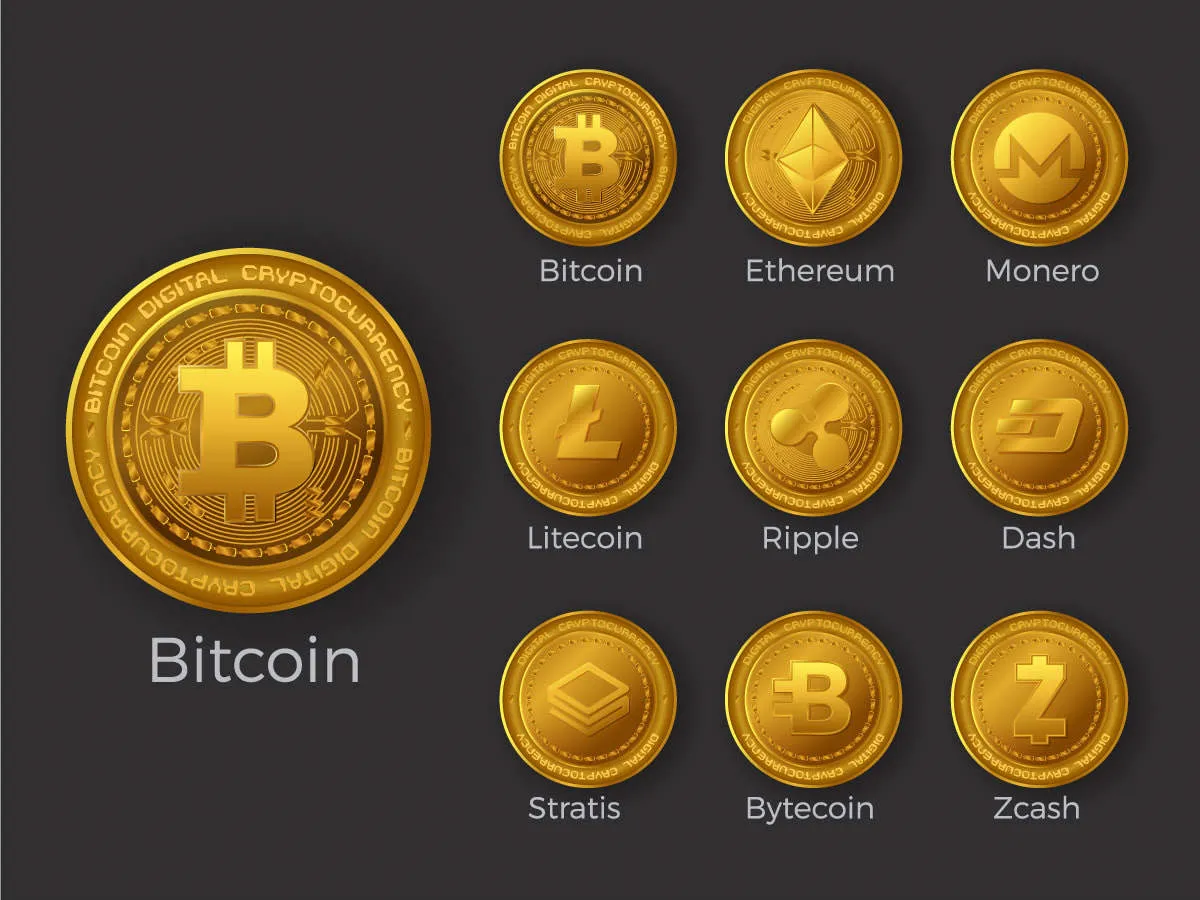Are you new to the world of cryptocurrency investing? Learn the basics and essential tips in our beginner’s guide to investing in cryptocurrency.
Understanding Cryptocurrency

Cryptocurrency is a type of digital or virtual currency that uses cryptography for security. Unlike traditional currencies issued by governments, cryptocurrencies are decentralized, meaning they are not controlled by any central authority like a bank or government.
Key characteristics of cryptocurrencies include:
- Decentralization: Transactions are verified and recorded on a distributed ledger called a blockchain, eliminating the need for intermediaries.
- Security: Cryptography protects transactions and makes them tamper-proof.
- Transparency: All transactions are publicly viewable on the blockchain, ensuring transparency.
- Limited Supply: Most cryptocurrencies have a limited supply, which can impact their value.
Bitcoin is the most well-known cryptocurrency, but thousands of others exist, each with its unique features and purposes. Some popular examples include Ethereum, Binance Coin, and Cardano.
Understanding the fundamentals of cryptocurrency, including its technology, characteristics, and risks, is crucial before making any investment decisions.
Types of Cryptocurrencies

While Bitcoin might be the most recognizable name in the world of crypto, it’s just the tip of the iceberg. Thousands of cryptocurrencies exist, each with its own technology, purpose, and potential. Understanding the different types can help you navigate the market more effectively.
1. Bitcoin and Altcoins
Bitcoin, created in 2009, was the first cryptocurrency and remains the largest by market capitalization. It operates on a decentralized network called a blockchain, which acts as a public ledger for all transactions.
Altcoins (alternative coins) refer to any cryptocurrency that isn’t Bitcoin. While they share the core concept of using blockchain technology, they often differ in their underlying algorithms, use cases, and features. Examples include Ethereum, Litecoin, and Ripple.
2. Stablecoins
As the name suggests, stablecoins are designed to maintain a stable value, usually pegged to a fiat currency like the US dollar or a commodity like gold. They achieve this stability by holding reserves of the underlying asset or through algorithmic mechanisms. Popular stablecoins include Tether (USDT) and USD Coin (USDC).
3. Privacy Coins
Privacy coins prioritize anonymity and transaction confidentiality. They use advanced cryptographic techniques to obscure transaction details, making it difficult to trace the sender, receiver, or amount. Examples include Monero and Zcash.
4. DeFi Tokens
Decentralized Finance (DeFi) aims to recreate traditional financial services (lending, borrowing, trading) on the blockchain without intermediaries. DeFi tokens power these platforms, often acting as governance tokens or providing utility within the ecosystem. Examples include Aave, Compound, and Uniswap.
5. Utility Tokens
Utility tokens grant holders access to a specific product or service within a blockchain project. Unlike security tokens, they don’t typically represent ownership or investment. Examples include Filecoin (used for decentralized storage) and Basic Attention Token (used for online advertising).
How to Buy Cryptocurrency

So, you’re ready to dip your toes into the world of cryptocurrency and acquire your first digital assets. That’s great! Purchasing cryptocurrency is generally straightforward, even for beginners. Here’s a step-by-step guide to get you started:
1. Choose a Cryptocurrency Exchange
A cryptocurrency exchange is a platform where you can buy and sell cryptocurrencies. It’s similar to a stock brokerage. Popular exchanges include:
- Coinbase
- Binance
- Kraken
- Gemini
- Crypto.com
When selecting an exchange, consider factors like:
- Available cryptocurrencies: Does the platform offer the specific coins you want to buy?
- Fees: Exchanges charge fees for trading, deposits, and withdrawals. Compare these carefully.
- Security: Look for exchanges with robust security measures like two-factor authentication (2FA).
- User Interface: A user-friendly platform can make a big difference, especially for beginners.
2. Create an Account
Once you’ve chosen an exchange, you’ll need to create an account. This typically involves providing your email address, creating a strong password, and verifying your identity (KYC/AML regulations).
3. Fund Your Account
To buy cryptocurrency, you’ll need to deposit funds into your exchange account. Most exchanges accept bank transfers, credit/debit card payments, or even cryptocurrency deposits.
4. Place Your Order
With funds in your account, you can now place an order to buy your chosen cryptocurrency. You can typically choose between different order types:
- Market Order: Buys the cryptocurrency at the current market price, ensuring a quick execution.
- Limit Order: Allows you to set a specific price at which you want to buy the cryptocurrency. The order will only execute if the price reaches your limit.
Enter the amount of cryptocurrency you want to purchase and confirm the order details, including fees, before submitting.
5. Store Your Cryptocurrency
Congratulations on your purchase! After the transaction is complete, the cryptocurrency will be added to your exchange wallet. However, for better security, it’s generally recommended to transfer your crypto assets to a personal wallet, such as:
- Software Wallet: These are applications downloaded to your computer or smartphone.
- Hardware Wallet: Considered the most secure option, hardware wallets store your crypto offline on a physical device.
Storing and Securing Your Crypto

Once you’ve purchased cryptocurrency, you need a safe and secure place to store it. Unlike traditional banking, you’re responsible for safeguarding your digital assets. This is where cryptocurrency wallets come in.
Types of Cryptocurrency Wallets:
- Hot Wallets: These wallets are connected to the internet and offer convenience for frequent transactions. Examples include software wallets (desktop, mobile) and web wallets (exchange platforms). While user-friendly, they’re more vulnerable to online threats.
- Cold Wallets: These wallets store your crypto offline, providing enhanced security against hacking attempts. Hardware wallets and paper wallets are common examples. Cold storage is ideal for long-term holdings.
Choosing the Right Wallet:
Consider these factors when selecting a wallet:
- Security Features: Look for wallets with strong encryption, two-factor authentication (2FA), and a good reputation for security.
- Supported Cryptocurrencies: Ensure the wallet supports the specific cryptocurrencies you want to store.
- Ease of Use: Consider the interface and features, especially if you’re new to cryptocurrency.
- Backup and Recovery Options: Choose a wallet that allows you to create backups of your private keys or recovery phrases.
Best Practices for Security:
- Strong Passwords and 2FA: Use unique, strong passwords for your wallets and enable two-factor authentication for an extra layer of protection.
- Beware of Phishing: Be cautious of suspicious emails, websites, or messages asking for your wallet credentials.
- Keep Software Updated: Regularly update your wallet software to benefit from the latest security patches.
- Secure Your Devices: Ensure your computer and mobile devices have up-to-date antivirus software and firewalls.
Risks and Rewards of Crypto Investing

Investing in cryptocurrency can be potentially lucrative but comes with its fair share of risks. Understanding these risks and rewards is crucial before diving into the crypto market.
Rewards
- High potential returns: Cryptocurrencies have the potential for high returns, with some digital assets having witnessed astronomical growth in recent years.
- Decentralization: Cryptocurrencies operate on decentralized networks, free from government or financial institution control, offering potential protection against traditional market manipulation.
- Accessibility: Investing in cryptocurrencies is relatively accessible, requiring only a smartphone or computer and an internet connection.
- 24/7 trading: Unlike traditional stock markets, cryptocurrency markets operate 24/7, providing flexibility for trading and investing.
Risks
- Volatility: The cryptocurrency market is known for its extreme price fluctuations, which can result in significant gains or losses in a short period.
- Regulatory Uncertainty: The regulatory landscape for cryptocurrencies is still evolving, and changes in regulations can significantly impact the market.
- Security Risks: Cryptocurrency exchanges and wallets can be vulnerable to hacking, theft, and fraud, posing a risk to investors’ funds.
- Lack of Regulation: The lack of a central authority or regulatory oversight in the crypto market can leave investors vulnerable to scams and fraudulent activities.
- Technology Risk: The underlying technology of cryptocurrencies is complex and constantly evolving, which can create risks for investors who may not fully understand it.
Future Trends in Cryptocurrency

While predicting the future of the ever-volatile crypto market is a fool’s errand, several emerging trends provide insight into potential developments in the space:
1. Increased Regulation
Governments worldwide are grappling with how to regulate cryptocurrencies. We can expect to see more comprehensive regulatory frameworks emerge, impacting everything from trading to taxation. This increased clarity could be a double-edged sword, potentially fostering wider adoption while also imposing limitations on certain activities.
2. Growth of DeFi
Decentralized finance (DeFi) aims to revolutionize traditional financial systems by building them on blockchain technology. Expect to see continued growth in DeFi applications, potentially offering new investment avenues and financial services.
3. The Metaverse and NFTs
The metaverse and non-fungible tokens (NFTs) are two interconnected trends with significant implications for the crypto world. As these digital realms expand, cryptocurrencies are likely to play an increasingly important role in their ecosystems, facilitating transactions and representing digital assets.
4. Central Bank Digital Currencies (CBDCs)
Central banks globally are exploring or actively developing their own digital currencies. The introduction of CBDCs could significantly impact the cryptocurrency landscape, potentially competing with existing cryptocurrencies or driving further innovation.
5. Focus on Sustainability
The energy consumption of some cryptocurrencies, particularly Bitcoin, has drawn criticism. Expect to see continued focus on sustainable practices within the industry, with more environmentally friendly cryptocurrencies and mining methods potentially gaining traction.
Conclusion
Entering the world of cryptocurrency investing requires thorough research and caution. Understanding the risks and potential rewards is essential for beginners to navigate this volatile market successfully.

